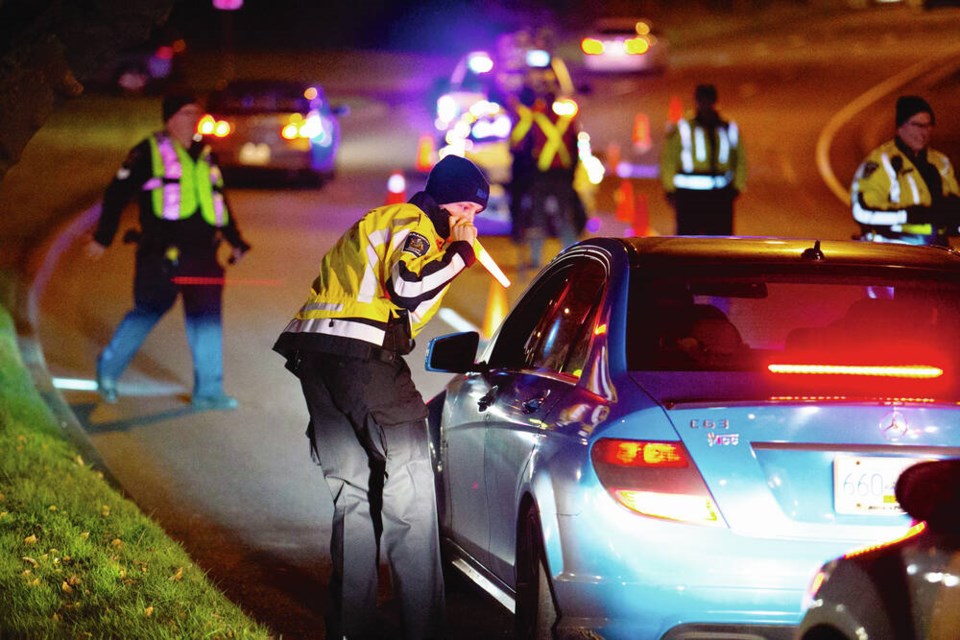Gary emailed recently with questions around marijuana use and driving. It’s an interesting and complicated topic.
It’s no surprise that since cannabis laws have been relaxed in sa国际传媒, there’s more drug impairment on our roads.
Dr. Jeremy Brubacher from the University of British Columbia studied 4,300 people admitted to provincial trauma centres between 2013 and 2020. Since legalization, the number of crash-injured drivers found with blood THC concentrations above the legal limit has more than doubled.
To be fair, the percentage of drivers found in this condition overall is small — 8.6%. But that increase, from 3.8% before legalization, is still cause for concern.
Equally troubling is that sa国际传媒 RCMP highway patrol members now find that about 30% of their impaired cases involve marijuana use, according to Cpl. Mike Moore, media relations officer for the highway patrol.
Gary asked how marijuana use is detected in drivers. According to Moore, detection usually occurs through simple observation. That’s easy to fathom. I’ve been gassed out by marijuana clouds from cars near me on several occasions.
Cops will also look for physical symptoms of impairment — bad driving, glassy, bloodshot eyes, dilated pupils and jerky eye movements known as nystagmus.
In very serious cases, a drug recognition expert officer may be called in to conduct detailed testing to determine the effect of marijuana impairment. Blood and urine tests will also be taken if a person ends up in hospital.
The Criminal Code gives police the authority to demand a blood sample from an impaired driver as well, be it for drugs or alcohol. These types of demands usually occur in serious circumstances and the tests must be performed by a medical practitioner.
In most cases, police use a roadside screening device to rule out the possibility of alcohol impairment. Refusing a test is a criminal offence. Under sa国际传媒 law, you can also be slapped with an immediate 90-day driving prohibition and a 30-day impoundment of your vehicle for a refusal. That one also comes with a $500 penalty.
Gary also wondered if drug-impaired driving has levels of measurement like we have for alcohol-impaired driving. Yes, it does.
At the federal criminal level, if you’re at or over 2 nanograms but under 5 nanograms of THC per millilitre of blood, you can be charged with a less serious summary conviction offence.
If you’re over 5 ng of THC per ml of blood, the Crown can go with the less serious summary conviction level or with a more serious indictable offence charge.
Interestingly, if you’re at or over 2.5 nanograms of THC but also have an alcohol reading of .05, the Crown can also choose summary conviction or indictment.
Under the Criminal Code, fines for a first offence can be up to $1,000. More serious or repeated impaired-driving incidents can lead to fines starting at $1,000 and jail time. A criminal conviction will also lead to a minimum one-year driving prohibition.
Gary also asked whether if no evidence of impairment is found after a blood test, a police officer would face consequences. Legal precedents from the courts change on a yearly, if not monthly, basis, so I won’t presume to offer a legal opinion.
Our impaired-driving laws are still strict and the courts have granted police strong powers to detect and apprehend drunk drivers. An officer following procedure and acting in good faith rarely faces negative consequences.
There are other factors at play since legalization as well.
If you’re carrying marijuana in your car it has to be unopened — sealed in its approved government packaging. Anything unsealed must be inaccessible, like in the trunk.
Drivers and their passengers can’t use marijuana while operating a vehicle. Drivers can be charged even if it’s only their passengers who are toking up.
Operating your vehicle is considered the same as driving under sa国际传媒’s marijuana laws, meaning that if you just have care and control of your vehicle, you are still liable.
All these conditions assume the possession of a legal amount of marijuana, which is no more than 30 grams. Using medically approved marijuana does not exempt you from any impaired driving laws either.
You can use marijuana in a motorhome or a trailer, provided it is parked in a campground, used as temporary or permanent private residence and is not parked on a highway or forest service road.
So what do nanograms, milligrams, summary and indictable offences or care and control boil down to?
In short, marijuana interferes with the brain’s ability to multitask — the exact skill set you need to drive a vehicle.
According to Moore, it’s simple. Don’t do it. Marijuana use and driving simply don’t mix. The penalties are steep and the consequences of driving high just aren’t worth it.
>>> To comment on this article, write a letter to the editor: [email protected]



